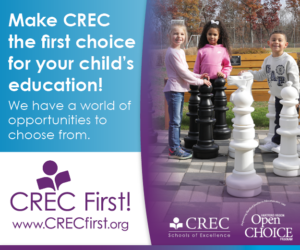Sex education has been a hot button topic for years. Many people grew up without receiving a drop of sex education at school or from parents due to fear (they thought) of what it could lead to. Would knowing about sex cause our kids to become sex deviants? Would learning about condoms encourage our kids to have sex very young? Is talking about sexual orientation going to make our kids gay?
I can assure you, the answer to all these questions is “no.” There is no evidence that knowing about sex drives children to become sex maniacs; indeed, the facts show that kids armed with comprehensive sexual health information have sex later, on average. But the key word here is “comprehensive.” Historically (and even today in many, if not most, schools), sex education has always been lacking, if it existed at all.
Prior to the 1960s, the primary focus of public health when it came to sex was moral purity, not safety. The main message was not to have sex before (heterosexual) marriage. Before we had things like antibiotics and effective condoms, this made some sense, since with fewer sex partners, likelihood of a sexually transmitted infection is reduced. Before modern medical care, an STI could result in undesirable outcomes, not the least of which were infertility or death, to say nothing of shame and fear. After such treatments and preventives were available, the attitude of moral purity persisted until the 1960s.
The 1960s were a pivotal time for sexual attitudes. For starters, they marked what many consider to be the beginning of the modern LGBTQ+ movement: Stonewall. The 60s also saw the legalization of the birth control pill in the United States, which gave women unprecedented freedom and control over their lives. At this time, school sex education gained widespread support in the United States. However, in the 1980s, as the US swung back toward more conservative politics, a debate began between proponents of comprehensive sex ed and proponents of abstinence-only education. This debate continues today, as schools all over the country grapple with how to provide sex ed in a way that is both appropriate and informative.
Of course, it goes without saying that LGBTQ+ sexuality was not even on the radar until recently. When we are arguing over whether we should be allowed to say the word “condom,” we aren’t likely to get into nitty-gritty on the human sexuality spectrum, are we? Consequently, LGBTQ+ inclusive sex ed has been provided largely on the fringes of educational efforts. Many public health professionals would not even broach the subject, and so such education happened by sharing personal experience, experimentation, and by seeking out the rare healthcare professional who was willing to discuss it. Eventually, organizations dedicated to LGBTQ+ health (notably Fenway Health in Boston, which opened in 1971) began popping up to provide needed education in a more traditional healthcare setting.
Today, the fight we embark on is to improve existing sexual health education in schools and to make it inclusive of the LGBTQ+ community, as well. Excluding LGBTQ+ students’ needs from sex ed curricula implicitly tells them that their sexual interests are abnormal or not worth addressing. In other cases, well-meaning teachers may not be trained sufficiently on the subject and deliver partial or inaccurate information.
The attitude in the school is also an important factor. If teachers deliver LGBTQ+ sex education in a prejudiced manner, intentionally or unintentionally, or if they tolerate homophobic bullying by students, it creates a hostile learning environment, which makes LGBTQ+ students less engaged, and according to a 2004 study by Ellis and High, worse off than if LGBTQ+ sex ed wasn’t mentioned at all.
Progress isn’t made in a day. The fight for comprehensive and inclusive sex ed has been, and continues to be, a battle. However, it is clear from the progress we’ve made since the “moral purity” era of sex education that we are capable of making huge and positive advances. The fight can be very discouraging at times; making history is slow going. Take heart in the huge amount of progress we have made in the last 75 years, though. Keep the progress ball rolling by taking action today! The most obvious way is to educate your own kids. Make sure you are providing them with the best possible information by educating yourself, too! Want to push schools and other public health spaces to improve their sex ed curricula? Write to your local and state representatives about what you want to see. Talk to other parents about the subject. Many parents are simply unaware or misinformed, and this is easy enough to fix with the right information. The more people are invested in providing kids with LGBTQ+ inclusive sex ed, the more likely and sooner we are to have it in every school.
—Kim Adamski







More Stories
More Than Ever, Pride as Resistance, Visibility and Unity
Grounding in Daily Purposeful Actions
It’s (Not) All In Your Head: Mental Health And Sex